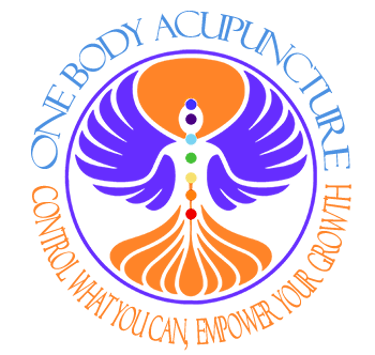Acupuncture Diagnosis
Patients interested in One Body Acupuncture receive treatment from Dr. Cobb, a licensed and qualified acupuncturist who can provide a thorough evaluation and personalized care.
Acupuncture diagnosis is a process used by licensed acupuncturists to assess a patient's health condition and determine an appropriate course of acupuncture treatment. Traditional Chinese Medicine (TCM), which includes acupuncture, relies on a holistic approach to diagnosis that takes into account various aspects of a patient's health and well-being. Here are some key components of acupuncture diagnosis:
Patient Interview: Acupuncturists begin by conducting a thorough interview with the patient. They ask questions about the patient's medical history, current symptoms, lifestyle, diet, and emotional well-being. This information helps the acupuncturist understand the patient's overall health and any specific concerns.
Pulse Examination: Pulse diagnosis is a vital component of TCM diagnosis. Acupuncturists use their fingers to feel the pulse at various points on the patient's wrist. The pulse is assessed for qualities such as rate, rhythm, depth, width, and strength, which provide insights into the patient's internal balance and the state of different organ systems.
Tongue Examination: Acupuncturists examine the patient's tongue to assess its color, coating, shape, and other characteristics. The tongue's appearance is believed to reflect the condition of internal organs and the overall state of health.
Physical Examination: Acupuncturists may perform a physical examination to assess the patient's posture, mobility, and any areas of pain or discomfort. They may also palpate specific points on the body to detect areas of tenderness or tension.
Chinese Medicine Patterns: Based on the information gathered from the interview, pulse examination, and tongue examination, acupuncturists identify patterns of disharmony in the patient's body. These patterns are categorized according to traditional Chinese medicine principles, such as Yin-Yang imbalances, Qi (energy) deficiencies or stagnations, and the state of various organ systems.
Treatment Plan: Using the diagnostic information, the acupuncturist develops a personalized treatment plan. This plan includes the selection of acupuncture points, the choice of acupuncture techniques (e.g., traditional acupuncture, electroacupuncture, cupping therapy), and the frequency of treatment sessions.
Progress Monitoring: Throughout the course of treatment, acupuncturists monitor the patient's progress by regularly reassessing the pulse, tongue, and symptoms. Adjustments to the treatment plan may be made as needed based on changes in the patient's condition.
It's important to note that acupuncture diagnosis is distinct from Western medical diagnosis. Acupuncturists use a different theoretical framework and assessment methods rooted in traditional Chinese medicine. Acupuncture is often used as a complementary or alternative therapy to address a wide range of health issues, including pain management, stress reduction, and the promotion of overall well-being. Patients interested in acupuncture should seek treatment from a licensed and qualified acupuncturist who can provide a thorough evaluation and personalized care.


